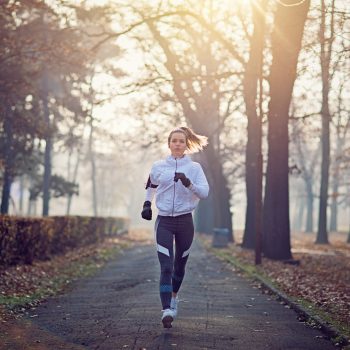Continuous aerobic activity is essential for a healthy lifestyle. Better still if practiced outdoors. However, air pollution and physical exercise in the open air can be an unhealthy combination. This is especially true if you suffer from disorders such as asthma and diabetes, or if you have problems with your heart or lungs. Young children, the elderly and people who work or exercise outdoors can be particularly sensitive to the effects of air pollution. We talk about this with Professor Daniela Lucini, head of exercise medicine at Humanitas.
Side effects of pollution
Car traffic, pollen from flowers, trees and shrubs, wind-blown dust, smoke from burning wood or agricultural machinery. Even when you don’t train, exposure to all these factors that make the air you breathe less pure can cause health problems. The combination of air pollution and physical exercise has the power to increase the potential health problems that exposing oneself to these situations entails. During aerobic activity, you usually inhale more air and inhale more deeply into your lungs. When breathing through the mouth, the air we breathe generally does not enter through the nasal holes, which normally filter the polluting particles from the air. Health problems associated with air pollution include:
- Headaches
- Irritant effect on eyes, nose and throat
- Damage to the respiratory tract
- Increased risk of developing asthma
- Deterioration of existing asthma or other pulmonary conditions
- Increased risk of heart attacks and strokes
- Increased risk of death from lung cancer and cardiovascular diseases
People living in large cities are regularly exposed to levels of air pollution far beyond the limits recommended by the World Health Organization. It is therefore better to minimize direct exposure to pollution. However, outdoor exercise has such clear health benefits and giving up outdoor training is not the answer. Research has shown that the long-term benefits of regular exercise outweigh the risks associated with exposure to air pollution.
Exercise without exposing yourself to too much pollution
To stay as healthy as possible while you train, focus on ways to minimize exposure to air pollution. You can limit the effects of air pollution when you train in many ways. For example, monitoring levels when you plan to train out and moving your workout to your home or gym when the air is worse. Air pollution levels tend to be higher around lunchtime and in the afternoon.
It is best to avoid running at rush hour, especially if you run close to a busy road. Pollution levels are likely to be the highest within 400 meters of a road.
If you have asthma, diabetes or other conditions, it is best to consult your doctor to find out what kind of training is best, when to do it and, above all, where.
“On this issue we should not feel alarmed – warned Lucini. Working out in the open air is a good thing, certainly being careful to avoid the busiest streets when doing activities that require more ventilation. In general, alternating outdoor activities such as running or walking with activities such as swimming or training with the machines for muscle strengthening in the gym remains the best solution.










